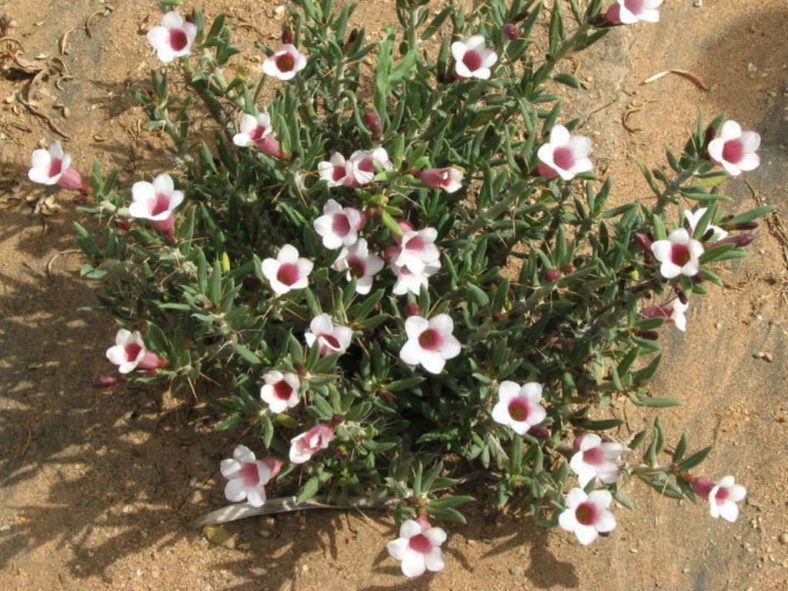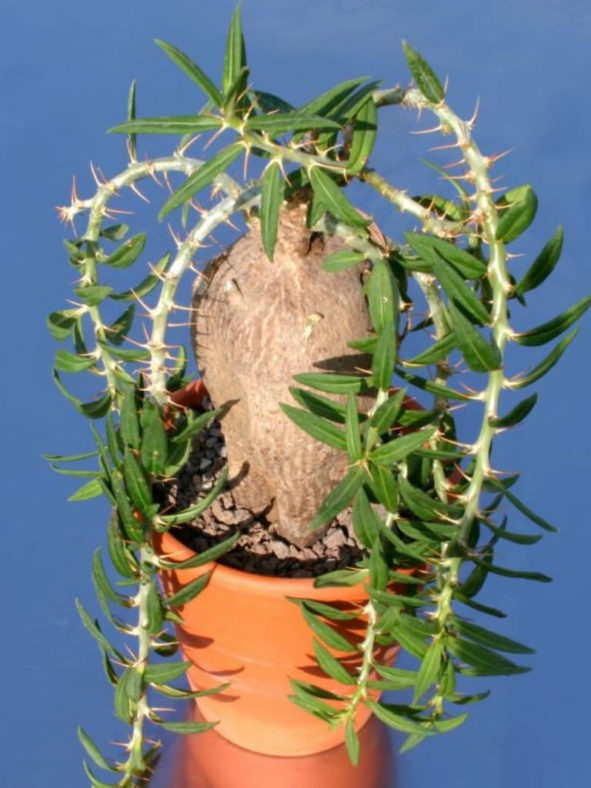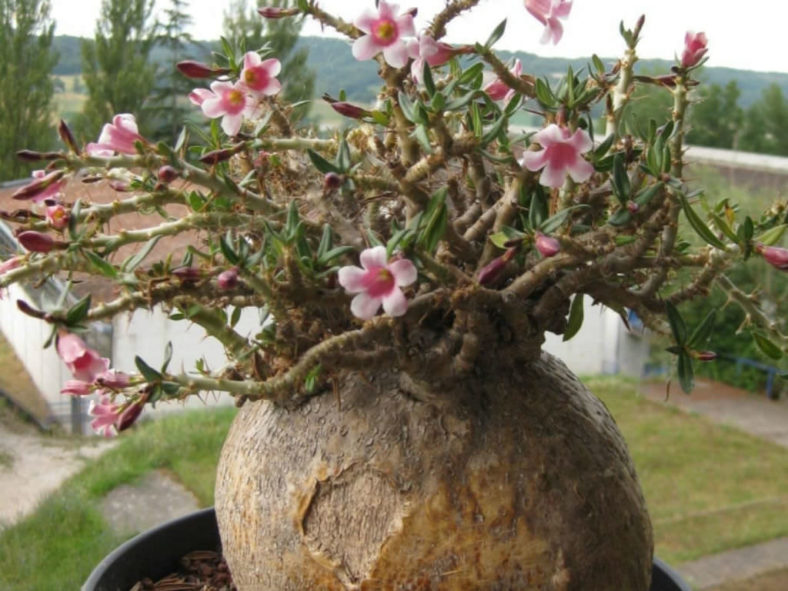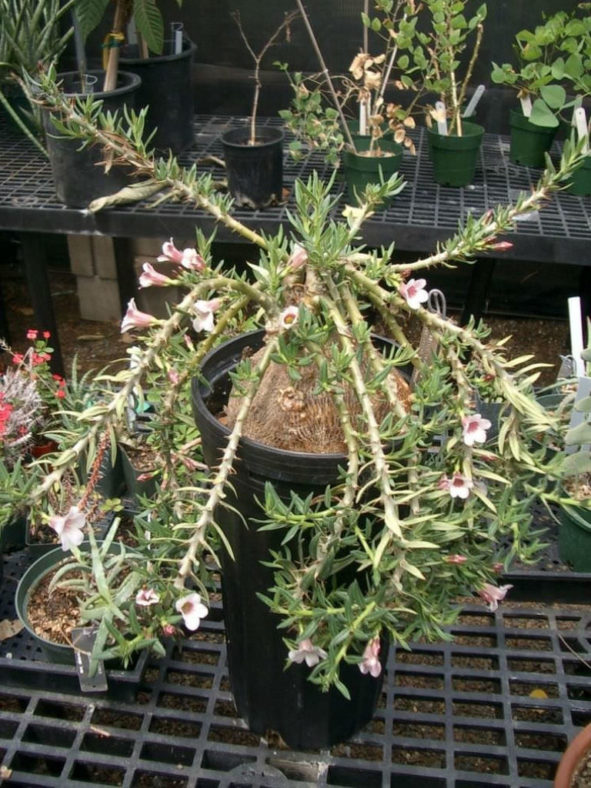Scientific Name
Pachypodium bispinosum A.DC.
Synonym(s)
Belonites bispinosa, Echites bispinosa, Pachypodium glabrum
Scientific Classification
Family: Apocynaceae
Subfamily: Apocynoideae
Tribe: Malouetieae
Genus: Pachypodium
Origin
Pachypodium bispinosum is native to South Africa (Eastern Cape). It grows in stony places among the dry succulent scrub.
Description
Pachypodium bispinosum is a succulent shrublet with thick bonsai-like branches that sprout from the top of a large tuberous stem partially buried beneath the soil. The tuber can grow up to 2 feet (60 cm) tall and 10 inches (25 cm) in diameter. The branches are lined with paired, straight spines measuring up to 0.8 inches (2 cm) long. The leaves are narrow, dark green, and can be scattered or in tufts along the branches.
From spring to summer, the plant produces a few purple to pink flowers in clusters at the tips of the branches. The bell-shaped flowers can reach up to 0.8 inches (2 cm) in diameter. When not in flower, the plant is indistinguishable from Pachypodium succulentum, a species it overlaps in its natural range.

Hardiness
USDA hardiness zones 9b to 11b: from 25 °F (−3.9 °C) to 50 °F (+10 °C).
How to Grow and Care
The attractive flowers of Pachypodiums and the intriguing shapes of their swollen stems make them desirable for any garden. However, they are unsuitable for cold or damp gardens and susceptible to frost. Therefore, if planted in a sunny garden that experiences occasional frost, they should be given a warm, sheltered position.
They make good accent plants in a rock garden, especially when grouped with other caudiciform succulent plants. All need full sun, lots of water (except during the dormant phase), and must have good drainage.
Almost all species are surprisingly adaptable to cultivation, changing their growing season when grown in the northern hemisphere.
These plants like ample light and grow best in full sun. Partial shade is tolerated but may discourage flowering. When grown in a glasshouse, ventilation is important. Abundant water is required during the growing season, depending on the species and specimen size. Allow the soil to dry out before adding more water
Learn more at How to Grow and Care for Pachypodium.
Links
- Back to genus Pachypodium
- Succupedia: Browse succulents by Scientific Name, Common Name, Genus, Family, USDA Hardiness Zone, Origin, or cacti by Genus
Photo Gallery
Click on a photo to see a larger version.


